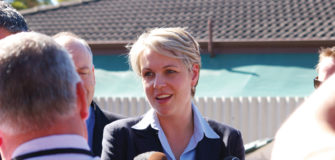Shiel-Jones manages five associations: the Australasian Rehabilitation Nurses’ Association, the Business & Professional Women of Australia, Cemeteries & Crematoria Association of Victoria, Smart Grid Australia and the Victorian Security Institute.
In January 2010, she expanded on her association management skills by completing the Canadian Society of Association Executives’ Certified Association Executive designation in not-for-profit management program, which she says “helped build a sound knowledge around NFP (not-for-profits) in specific management cases and skillsets”.
Efficient management
Shiel-Jones oversees the back office and administrative aspects to make sure that the associations are running smoothly. “In a way, I’m like an executive officer,” she says. “Whether it involves finance or IT, marketing or planning, I assist with making it happen.”
Despite the different purposes of associations, the differences in managerial skills are only subtle.
“Obviously for some clients, conflict of interest is a big thing, so you need to be very careful with confidentiality,” Shiel-Jones explains. “Other clients are very much membership focused, so my skills in the areas of marketing, membership and communication are really called upon.”
“With some associations I’m very much relied upon to make annual general meetings, constitutions and requirements with Consumer Affairs or ASIC [Australian Securities and Investments Commission] happen as well.”
Board meetings are her best source of knowledge to learn about what each industry is up to and what members need to know.
Working with both Victorian-based and international associations, Shiel-Jones is familiar with the differences in governance, and reporting and auditing requirements.
“If it’s Victorian-based, then it’s just Consumer Affairs I have to deal with, whereas the bigger ones have different bodies and different requirements, which I need to ensure are dealt with appropriately,” she says. “Despite the differences between associations, ‘red tape’ and reporting issues are still applied to smaller associations.”
Managing NFP challenges
Shiel-Jones says that membership decline and legal issues are some of the major challenges for the NFP sector.
She says that communication is the key for any kind of change or tension, to make sure the members and the board know exactly what’s happening when. She says that it is vital to ensure members are told what they need to know in a timely fashion, not only to reduce uncertainty but also to eliminate gossip.
Planning is also crucial. “The board should have a process for dealing with challenges to ensure that there is accountability, even if it is as simple as calling a special general meeting for the members and letting them decide on a course of action.”
“Board members need to know what they need to do and how it’s going to be done so they can move forward and tick off accomplishments at each meeting.”
The evolution of the sector
Shiel-Jones identifies a number of changes for the sector:
1. Shiel-Jones says that auditing changes are always difficult, and she predicts that next year there may be more issues in relation to the changes in the Associations Act. She says that things have transitioned smoothly so far, however there is a lot of uncertainty surrounding whether the changes will actually be helpful.
“It would be fantastic if there were a few changes to make reporting more straightforward,” she says. “Maybe if one form was nationalised for everything rather than having seven different forms for seven different states or territories.”
2. The pervasiveness of internet and communication has forced those in the NFP sector to adopt a heightened awareness of security. “Making sure all membership details are under wraps whilst at the same time giving members access to information and other members’ details is a tricky line to balance.”
3. Gen Y has resulted in a shift in membership. “They’re not loyal to a product,” Shiel-Jones says. “They’re happy to be a member when it’s convenient, and then end it. This creates a volatile environment for associations, making it difficult for them to budget for membership and to market towards this group.”
4. Internationalisation, alliances and mergers have resulted in increased standards and competencies for association executives. The top jobs are held by someone who has a good set of management skills and corporate connections rather than someone with industry knowledge. “The professionalism of the third sector is being stepped up because associations have to grow and need someone who can manage that.”
Working for a purpose
“My biggest kick is that I’m working with volunteers that are dead-passionate-enthusiastic about their cause. You can hear that passion every time you go into a board meeting. That motivates me to do my job to the best level that I can, because they’re doing it out of the goodness of their hearts.
“Working with volunteers really gives you that extra motivation to put in
110 per cent. It’s nice to feel connected to community too, knowing that it’s for a purpose and that you are making a difference.”
Professional Association Management Services (PAMS) specialises in organising, guiding and assisting not-for-profit associations with every aspect of running the organisation including membership management, marketing, events, accounting, IT, administration and strategic planning.
















































































































































